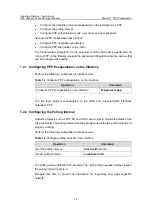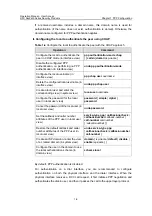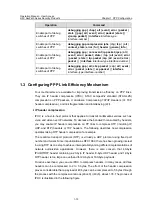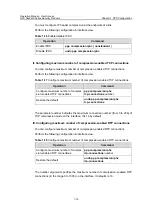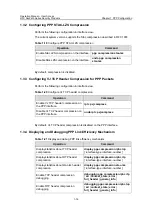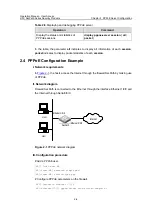
Operation Manual – User Access
H3C SecPath Series Security Products
Chapter 1 PPP Configuration
1-14
incoming packets
Traffic classifying
Sending queue
queue
RTP header
cpmpression
Non RTP traffic
Figure 1-2
IP header compression
II. STAC-LZS compression
STAC-LZS compression is a link-layer data compression standard developed by Stac
Electronics. STAC-LZS is a Lempel-Ziv-based algorithm that compresses only packet
payloads. It replaces a continuous data flow with binary code that can accommodate to
the change of data. While allowing for more flexibility, this requires more CPU
resources.
III. VJ TCP header compression
VJ TCP header compression was defined in RFC1144 for use on low-speed links.
Each TCP/IP packet transmitted over a TCP connection contains a typical 40-byte
TCP/IP header containing an IP header and a TCP header that are 20-byte long each.
The information in some fields of these headers, however, is unchanged through the
lifetime of the connection and needs sending only once, while the information in some
other fields changes but regularly and within a definite range. Based on this idea, VJ
TCP header compression may compress a 40-byte TCP/IP header to 3 to 5 bytes. It
can significantly improve the transmission speed of some applications, such as FTP, on
a low-speed serial link like PPP.
1.3.1 Configuring IPHC
IPHC configuration tasks are described in the following sections:
z
z
Configuring maximum number of compression-enabled TCP connections
z
Configuring maximum number of compression-enabled RTP connections
I. Enabling/disabling IPHC
Executing the command in the following table can enable the IP header compression
on some interface. Enabling IP header compression enables the system to compress
the TCP packets for RTP session setup. Likewise, disabling IP header compression
disables the system to compress the TCP packets for RTP session setup.




